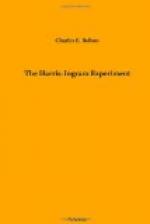“There the queen and Prince Albert painted, sang, and read together. Those were happy days indeed for the young rulers of a kingdom. Each of their children had a garden. The Prince of Wales worked in a carpenter’s shop, and the royal princesses learned housework in a kitchen and dairy prepared for them.” This was a revelation to Lucille, who had been reared with little or nothing to do.
Lucille told Gertrude and May that she had just been reading the early life of the queen, who said, “If one’s home is happy, then trials and vexations are comparatively nothing.” The queen also said, “Children should be brought up simply and learn to put the greatest confidence in their parents.” Lucille continued, “The queen often visited her people, bringing toys for the children—a promise to a child she never forgets—and gifts of warm clothing for the aged, to their great delight.”
At a conference of the Harris family, it was decided to go to London after spending Monday in a carriage drive to Warwick and Kenilworth castles and Stratford-on-Avon. So Monday promptly at eight o’clock two carriages stood waiting at the hotel. Colonel Harris took Mrs. Harris, May Ingram, and Alfonso with him, and George Ingram took Gertrude, Lucille, and Leo in the second carriage.
There are few, if any, more magnificent drives in England than the one through the beautiful Stratford district. It is recorded that two Englishmen once laid a wager as to the finest walk in England. One named the walk from Coventry to Stratford, the other from Stratford to Coventry.
It was a delightful day and both the colonel and George entirely forgot business in their enjoyment of the loveliest country they had ever seen. A drive of two miles, from Leamington and along the banks of the historic Avon, brought them to Warwick Castle which Scott calls “The fairest monument of ancient and chivalrous splendor uninjured by the tooth of time.” It is said that Warwick Castle was never taken by any foe in days gone by.
Our visitors drove over the draw-bridge through a gateway covered with ivy, and still guarded as of old, by an ancient portcullis. In the hall of the castle, pannelled with richly carved oak, are religiously guarded the helmet of Cromwell, the armor of the Black Prince, and many historic relics and art treasures. The drawing-room is finished in cedar. In former days guests were summoned to the great banqueting hall by a blare of trumpets. In the gardens is seen the celebrated white marble Warwick vase from Adrian’s villa. Interwoven vines form the handles, and leaves and grapes adorn the margin of the vase. Superb views were had from the castle towers. In the Beauchamp chapel in the old town of Warwick repose the remains of Dudley, Earl of Leicester, one of Queen Elizabeth’s favorites. She gave Leicester beautiful Kenilworth Castle, which is five miles distant.
As the carriages drove over the smooth road, beneath the venerable elms and sycamores, artists along the way were sketching. Both Alfonso and Leo tipped their hats, as members of a guild that recognizes art for art’s sake, a society that takes cognizance of neither nationality nor sect.




